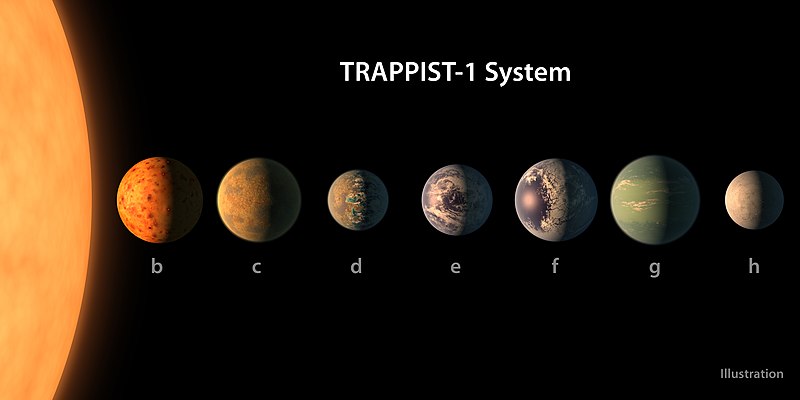Fișier:PIA21422 - TRAPPIST-1 Planet Lineup, Figure 1.jpg

Mărimea acestei previzualizări: 800 × 400 pixeli. Alte rezoluții: 320 × 160 pixeli | 640 × 320 pixeli | 1.024 × 512 pixeli | 1.280 × 640 pixeli | 2.560 × 1.280 pixeli | 6.000 × 3.000 pixeli.
Mărește rezoluția imaginii (6.000 × 3.000 pixeli, mărime fișier: 2,63 MB, tip MIME: image/jpeg)
Istoricul fișierului
Apăsați pe Data și ora pentru a vedea versiunea trimisă atunci.
| Data și ora | Miniatură | Dimensiuni | Utilizator | Comentariu | |
|---|---|---|---|---|---|
| actuală | 22 februarie 2017 21:39 |  | 6.000x3.000 (2,63 MB) | PhilipTerryGraham | User created page with UploadWizard |
Utilizarea fișierului
Următoarele pagini conțin această imagine:
Utilizarea globală a fișierului
Următoarele alte proiecte wiki folosesc acest fișier:
- Utilizare la af.wikipedia.org
- Utilizare la ar.wikipedia.org
- Utilizare la bn.wikipedia.org
- Utilizare la ca.wikipedia.org
- Utilizare la el.wikipedia.org
- Utilizare la en.wikipedia.org
- Utilizare la es.wikipedia.org
- Utilizare la et.wikipedia.org
- Utilizare la fi.wikipedia.org
- Utilizare la fi.wikibooks.org
- Utilizare la glk.wikipedia.org
- Utilizare la id.wikipedia.org
- Utilizare la ja.wikipedia.org
- Utilizare la ku.wikipedia.org
- Utilizare la lt.wikipedia.org
- Utilizare la ms.wikipedia.org
- Utilizare la my.wikipedia.org
- Utilizare la nl.wikipedia.org
- Utilizare la pnb.wikipedia.org
- Utilizare la pt.wikipedia.org
- Utilizare la tl.wikipedia.org
- Utilizare la tr.wikipedia.org
- Utilizare la uk.wikipedia.org
- Utilizare la ur.wikipedia.org
- Utilizare la vi.wikipedia.org


 French
French Deutsch
Deutsch


